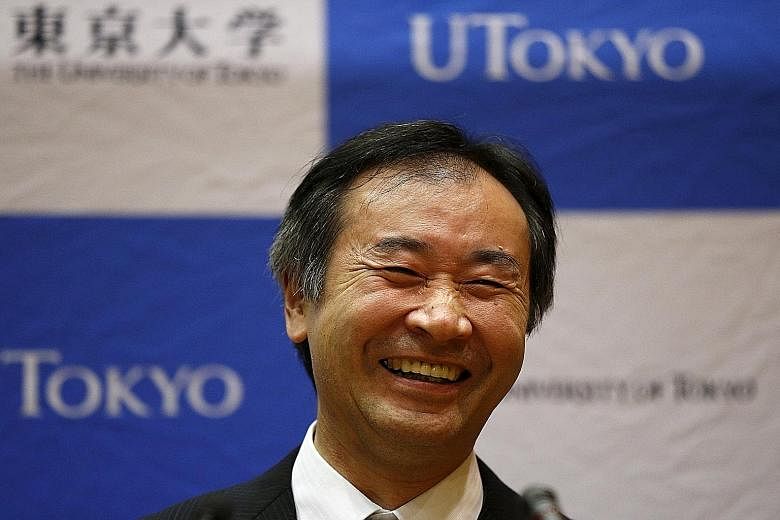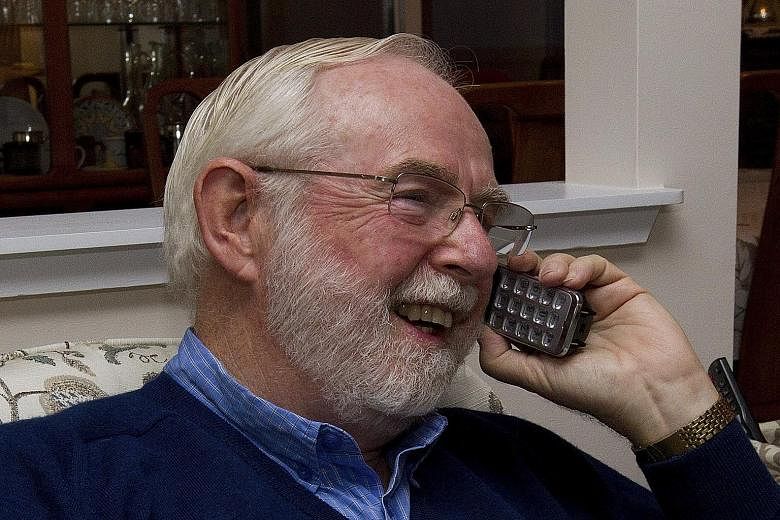STOCKHOLM • Two scientists - a Japanese and a Canadian - yesterday won the 2015 Nobel Prize for Physics for discovering that elusive subatomic particles called neutrinos have mass, opening a new window onto the fundamental nature of the universe.
Neutrinos are the second most bountiful particles after photons, the particles of light, with trillions of them streaming through our bodies every second, but their true nature has been poorly understood.
The breakthrough by Dr Takaaki Kajita and Dr Arthur B. McDonald was the discovery of a phenomenon called neutrino oscillation that has upended scientific thinking and promises to change our understanding about the history and future fate of the cosmos.
"It is a discovery that will change the books on physics, so it is a really major discovery," said Dr Barbro Asman, a Nobel committee member and professor of physics at Stockholm University.
In awarding the prize, the Royal Swedish Academy of Sciences said the scientists' discovery had "changed our understanding of the innermost workings of matter and can prove crucial to our view of the universe".
For many years, the central enigma with neutrinos was that up to two-thirds fewer of them were detected on Earth than expected.
Dr Kajita and Dr McDonald, using different experiments, managed to explain this around the turn of the millennium by showing that neutrinos actually changed identities, or "flavours", and therefore must have some mass, however small.
Dr McDonald, speaking by phone to a news conference in Stockholm, said the finding not only gave scientists a more complete understanding of the world at a fundamental level but could also shed light on the science behind fusion power, which drives the Sun and could one day be tapped as a source of electricity on Earth.
"Yes, there certainly was a Eureka moment in this experiment when we were able to see that neutrinos appeared to change from one type to the other in travelling from the Sun to the Earth," he said.
Dr Kajita is director of the Institute for Cosmic Ray Research and a professor at University of Tokyo, while Dr McDonald is professor emeritus at Queen's University in Canada.
The 8 million Swedish krona (S$1.37 million) physics prize is the second of this year's Nobels. Previous winners of the physics prize included Albert Einstein, Niels Bohr and Marie Curie.
The prizes were first awarded in 1901 to honour achievements in science, literature and peace in accordance with the will of Swedish business tycoon Alfred Nobel, who also invented dynamite.
The prize for medicine was awarded on Monday to three scientists for their work in developing drugs to fight parasitic diseases including malaria and elephantiasis.
REUTERS


